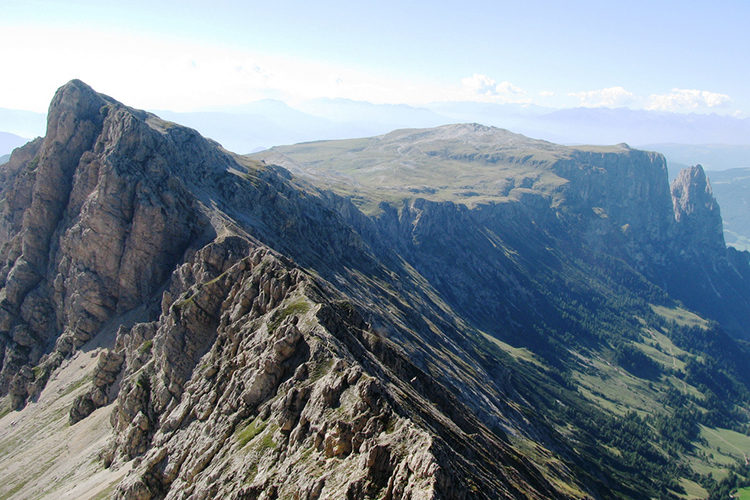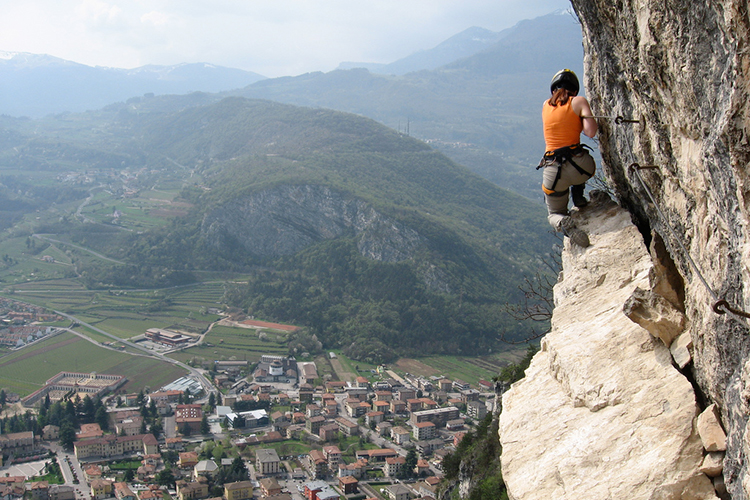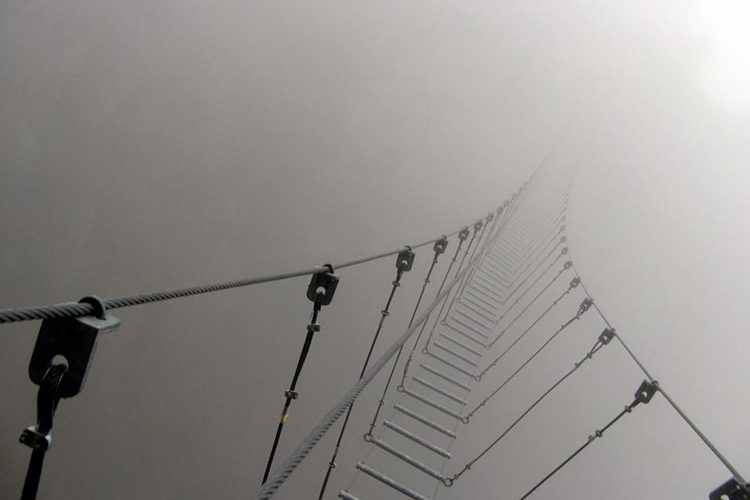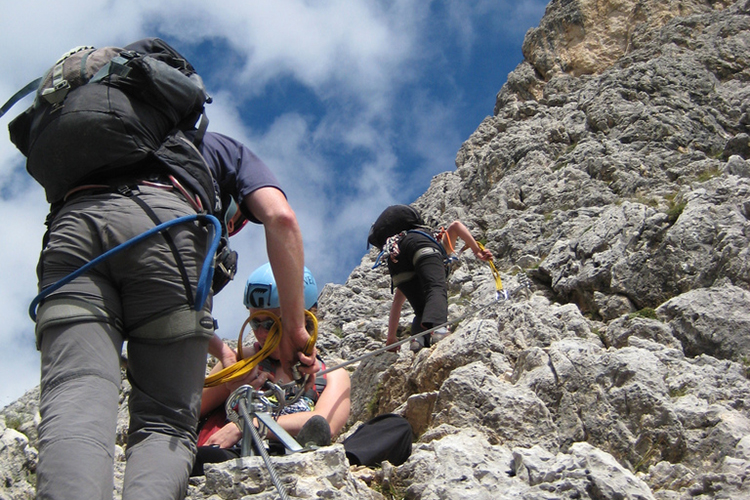
Via Ferrata Maximillian and Sciliar by Jon Shave. CC BY 2.0.
Ranging across the South Tyrol, Alto Adige and the Veneto, the Vie Ferrate (or ‘Iron Ways’) are a series of mountain routes equipped with fixed ladders, steel cables, bolted anchors and suspended bridges that allow climbers and hikers to scale the awesome peaks of the Dolomites without specialist equipment. Running along ledges, up vertical rock walls and across exposed mountainsides, the artificial equipment makes the peaks accessible to everyone with a good level of fitness.
The first routes were constructed at the end of the 19th century when the Alpine guides of Madonna di Campiglio fixed bolts up the Cima Brenta (3173m) so their Grand Tourist clientele could reach the summit without breaking too much of a sweat. In the following years, with the outbreak of World War I, the Vie Ferrate proved handy for moving troop columns along the Italo-Austrian border, so the routes proliferated all across the Dolomites and into the eastern Alps.
The first Via Ferrata in Cortina, Meneghel’s Ladder, was created by blacksmith Luigi Meneghel in 1907. Forging some 200 iron pins, he hammered them up the vertical rock face to Rifugio Giussani (www.rifugiogiussani.com) in the Forcella Fontananegra (2561m), the scene of some of the most intense fighting of World War I.

Via Ferrata near Lago di Garda by Martin from Tyrol. CC BY 2.0.
To climb a Via Ferrata you’ll need your regular hiking equipment – ankle-supporting boots, suitable layered clothing, backpack, first aid kit and high-energy snacks and water – as well as a helmet, harness, Ferrata gloves (tough leather gloves with reinforced palm) and a Ferrata set. The latter consists of two carabiners, short lengths of rope and a breaking device. This set is vital as the two short rope lengths and breaking device are specially designed to absorb the energy of any fall and, therefore, minimise the 'Fall Factor' (that is the ratio of the height of the fall to the length of rope used), which tend to be higher on Via Ferrata climbs than traditional rock climbing. For those climbing higher peaks or attempting climbs early or late in the season, an ice axe and crampons may be required. Also, don’t forget to take along a head torch or flashlight for exploring the ruins, trenches and tunnels excavated by soldiers during the Great War.

Bridge to nowhere by Paolo Crosetto. CC BY 2.0.

Climbing up by Marcus Povey. CC BY 2.0.
First off, the object of the Vie Ferrate is for climbers and hikers of all skill levels and reasonable fitness to access peaks safely and securely. That said, climbing them is still a strenuous and challenging experience that needs to be taken on with an awareness of the difficulties involved and a good head for heights. The most accessible routes are called Sentieri Ferrati ('Iron Walking Trails') while the more difficult are called Vie Ferrate ('Iron Ways').
The difficulty of a Via Ferrata usually depends on the steepness of the climb and the number of bolts and supports, either natural or artificial, along the way. However, one of the biggest dangers arises from inexperienced climbers assuming that easy routes are physically unchallenging. Many routes may be considered easy, in fact some appear to be little more than panoramic walks, but they can extend over kilometres, ascend through hundreds of metres and take up to eight hours to complete. Likewise, routes that are ‘easy’ can become difficult when there is snow, ice, fog or rain.
And then there’s the matter of timing. On easier routes hikers may set out later in the day and then find themselves struggling to reach the end, or take inadequate equipment. Before choosing a Via Ferrata, spend some time researching routes that are suitable for your level of fitness, strength (some are more of a ‘climb’ than others) and nerves (some can be very exposed with ‘bridges’ little more than cables across an abyss).
On all routes it is absolutely essential to carry the proper equipment at all times, and in the case of a fall, the Ferrata set should be changed immediately in case of any damage, which might not be obvious to the naked eye.